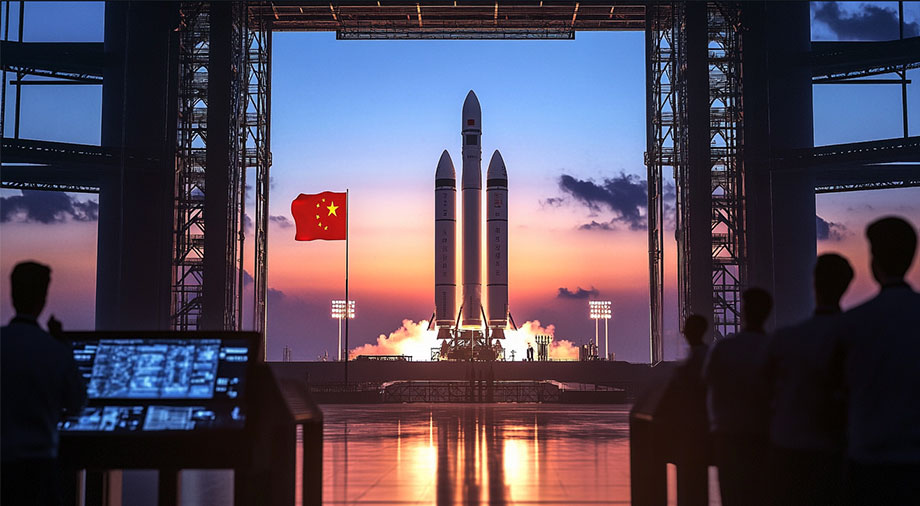The European Space Agency (ESA) is tirelessly encouraging young startups that offer new solutions to longstanding problems in the aerospace field and new technologies to make space even more accessible. In the future, entrepreneurs, along with the best scientists and engineers in the field, will play a crucial role in the modernization of the European space sector. As ESA continues to attract investments through various development programs and business incubation centers (BICs), startups will increasingly drive the industry forward, providing Europe with an excellent opportunity to compete with leading space powers like the USA and China.
This article will examine how ESA works to find and sponsor ambitious new startups and will provide a glimpse of which of these young aerospace companies currently offer the most interesting solutions for strengthening Europe’s commercial space sector.
The InSPoC venture initiative and the new space logistics ecosystem
The improvement of orbital docking technologies will continue to be a primary focus for aerospace research because it remains the key to creating a stable and reliable space logistics system. To focus efforts in this direction, ESA has founded the three-stage In-Space Proof-of-Concept (InSPoC) initiative, which aims to develop cutting-edge space docking and cargo transportation systems with the participation of European startups.
InSPoC is part of the more ambitious ESA STS Future Launchers Preparatory Program (FLPP), the main task of which is the construction of a reliable and competitive European space transport and logistics ecosystem.
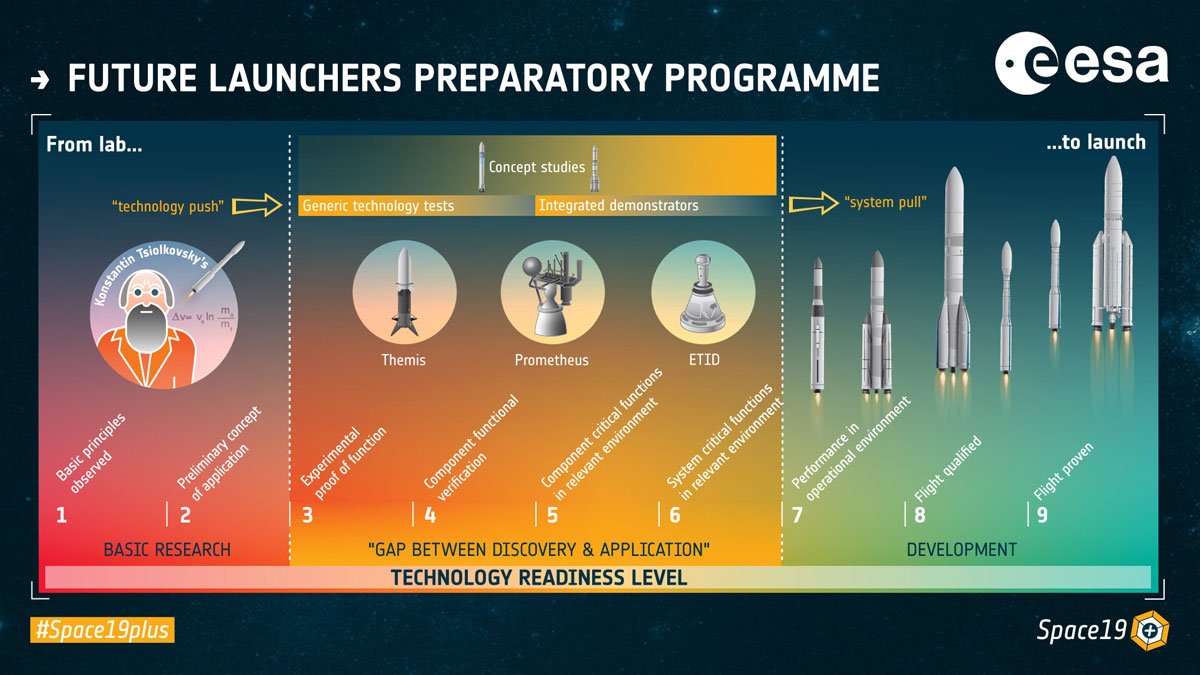
Source: ESA
At its heart, InSPoC is aimed at encouraging venture capital. Consequently, the initiative attracts young startups offering innovative solutions for the modernization of space navigation, logistics, on-orbit servicing, and more. As of today, three consecutive phases of InSPoC have been launched under the auspices of ESA, each of which focused on a specific type of task:
- In-Space Proof-of-Concept 1: This initiative is focused on the development and implementation of new methods for orbital rendezvous and docking. At its current stage of development, the initiative is concerned with gathering information from clients regarding the operation of the latest orbital docking systems. Data is collected through surveys, in which service providers and potential clients are asked to respond to a series of questions about their future vision for such technology. After evaluating requests, ESA will focus on selecting companies whose proposals most accurately meet clients’ requirements. The main goal of InSPoC-1 is to improve existing mechanisms for orbital rendezvous and docking to ensure greater reliability during future commercial space missions.
- In-Space Proof-of-Concept 2: This initiative is focused on the development and implementation of orbital cryogenic fuel storage systems and refueling technologies during space travel. This is the next step toward achieving full reusability in space logistics, as the ability to refuel in orbit is expected to enhance the durability and lifespan of future orbital transport ships and space tugs. The preparatory stage of InSPoC-2 began in early 2024 and has already received several interesting proposals for orbital fuel storage and refueling stations. ESA also opened a competition as part of the ESA-Star initiative, inviting participants to submit their visions for the future development of this segment of the space market. After analyzing proposals received through this survey, ESA will select the best and invite the winners to the next stage, which will involve the development and preparation of a demonstration of orbital refueling and fuel storage systems.
- In-Space Proof-of-Concept 3: This initiative focuses on developing onboard and shared intelligence in space to improve orbital traffic conditions. The primary goal of InSPoC-3 is to develop shared intelligence that will enable data exchange between different types of automated spacecraft. The preparatory phase of the initiative started on March 20, 2024. Like its predecessors, it is currently concentrated on identifying the most promising proposals and solutions as well as on a detailed analysis of client requests. This phase of InSPoC will focus on onboard and shared intelligence that will elevate space transport ecosystems to a fundamentally new level, ensuring real-time software updates, which are ultimately expected to extend the lifespan of transport ships. InSPoC-3 will involve the active participation of artificial intelligence systems in future logistics. To identify the best proposals, ESA has established the Embodied Intelligence for Space Transportation (EI4ST) competition, whose submission period ended on June 18, 2024. After careful review, several key ideas were selected, including monitoring the health of orbital engines; integrating model reference adaptive control (MRAC) into orbital docking and rendezvous procedures; implementing powerful distributed parallel computers to improve the avionics systems of launch vehicles and spacecraft; designing new power plant diagnostic systems; using wireless networks on launch vehicles to enhance communication and navigation in space; incorporating smart surfaces into spacecraft design; and applying machine learning (ML) and artificial intelligence (AI) systems with minimal SWaP (Size, Weight, and Power) and maximum generality.
The InSPoC Venture Club has already attracted over 150 stakeholders from the SpaceTech sector. However, this is not the final number of participants: more will join the initiative in subsequent stages of implementation. InSPoC’s plans are indeed global, as the concept envisions the creation of a modular and multipurpose space transport fleet, which, in coming decades, could make Europe an undisputed leader in the field of space logistics.
Incubation business centers: the cradle of European space innovation
ESA’s support for startups not only involves sponsoring interesting space solutions but also creating a unified space for establishing new partnerships and communication links. Most of these contacts are based in ESA’s business incubation centers (ESA BICs), which form a unified network for sharing new concepts and ideas in the NewSpace sector.
The ESA BIC network is quite extensive and is being developed around universities, industrial centers, and large European aerospace companies and research centers. Each of these incubation centers is distinct, but collectively they pursue a common goal: supporting and encouraging the development of new players in the European space business sector.
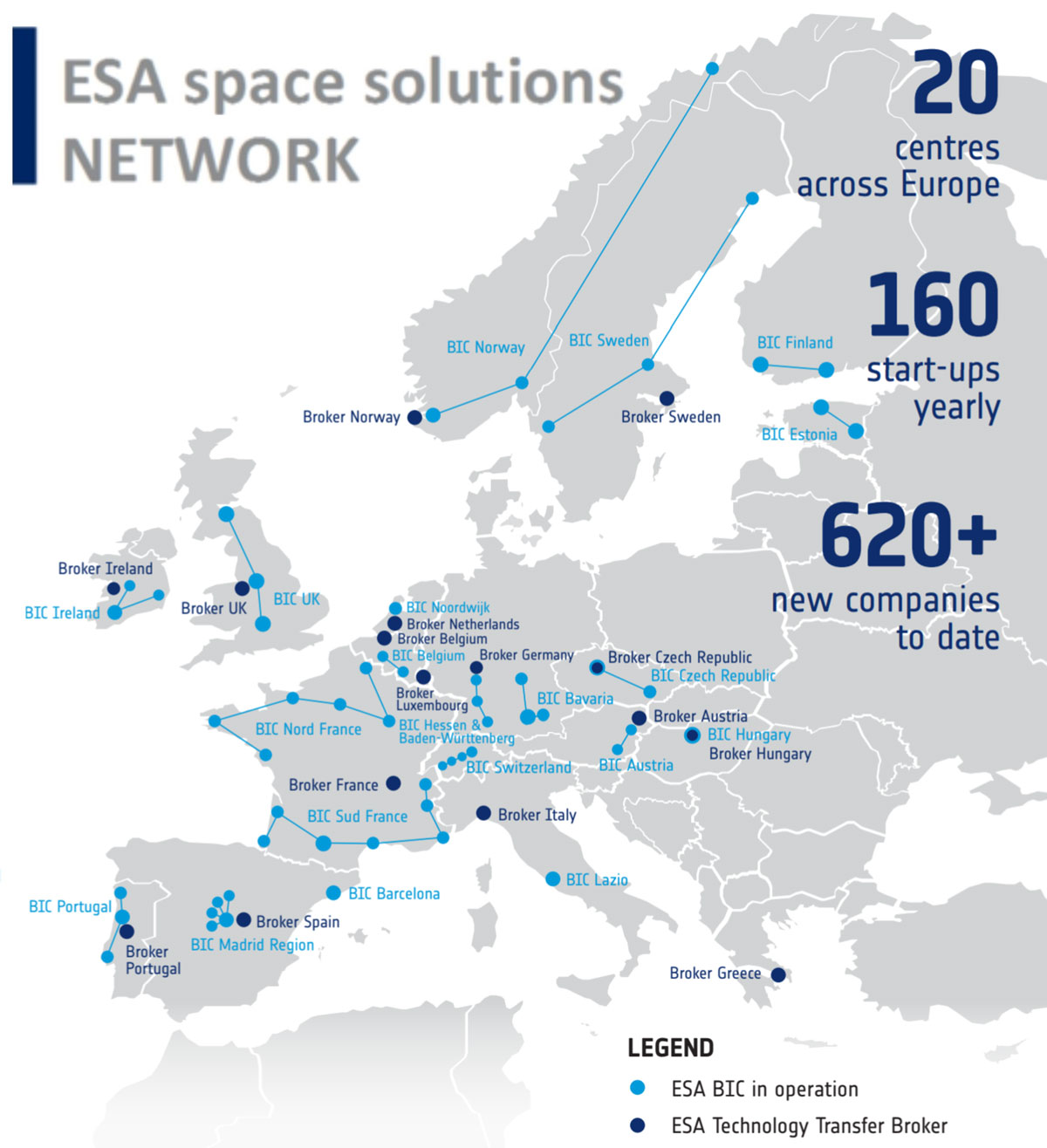
Source: ESA
As can be seen from the map above, many incubation business centers maintain horizontal links with other regional centers within the countries where they are located. This allows for the creation of entire clusters of thematic centers, which are united on a national basis. Strong regional ties help distribute the workload among participants and ensure that each incubation center can focus both on addressing specific specialized tasks as well as on the overall development of the industry across several key areas.
Currently, the most relevant tasks undertaken by ESA BICs include satellite navigation, communication, and monitoring; the application of satellite technologies in non-space sectors (i.e., solving tasks not directly related to space using space resources); and the development of computer programs and systems based on machine learning and artificial intelligence to standardize and automate various types of space activities.
As for the financial aspect, the material assistance provided unconditionally by ESA BICs at the initial stage of startup support is relatively small, ranging from €50,000 for product development and intellectual property. It should be noted that this initial amount may increase depending on the country of origin of the incubation center. For example, the Finnish ESA BICs offer newcomers €90,000 at the initial (project) stage of development.
Despite the relatively small amounts of initial financial assistance, ESA’s incubation business centers encourage venture capital through an extensive network of business connections among European countries and major aerospace companies at later stages of project design and technical demonstration. Thus, ESA initially provides startups with modest funds to create a demonstration version of the product, and at later stages, if it proves viable, the agency helps attract significant capital for its implementation.
Startups that begin working in ESA BICs can receive free advice from technical specialists, legal consultations regarding intellectual property rights and patenting new technologies, and have the opportunity to attend skill-enhancement workshops for their development teams.
Among the most interesting centers that have recently emerged among ESA BICs include:
- The Code Company — A Swedish BIC that specializes in satellite management in forestry through the development and implementation of user-friendly client-oriented software for monitoring and observing forest areas at all stages of logging activities.
- DB Space — An Italian BIC involved in creating a new generation of electric pumps for liquid and hybrid space propulsion systems to extend the lifespan of power plants and reduce fuel consumption.
- Arctic Farming — A Finnish BIC that offers its clients access to scalable vertical local farming technologies aimed at reducing global food waste in the cultivation process. This technology for growing fresh greens, berries, and vegetables is used on the ISS, but Arctic Farming aims to make it accessible to the commercial market as well.
- XIROI AEROSPACE SL — A Spanish BIC that specializes in developing small electric engines for CubeSats and small satellites, which allow spacecraft to maneuver in orbit and safely deorbit at the end of their operational life.
- DronEye — A German BIC that constructs drones with artificial intelligence focused on finding victims of man-made and natural disasters. DronEye is developing a special AI sensor that helps the drone classify a person in danger while simultaneously activating live video surveillance of the target, which is sent to rescuers via mobile networks (4G/LTE). The flight path of the drones can be pre-configured using GNSS coordinates.
ESA’s incubation business centers are a simple and intuitive solution, free from the excessive bureaucracy that is typical of many European institutions, where young aerospace entrepreneurs can receive the necessary support to realize an idea. In over 20 incubation centers across Europe, around 160 aerospace startups “mature” each year, some of which may eventually join the top players in the European aerospace sector over the next few years, changing the entire industry’s landscape with their technology solutions and innovative products.
The most interesting space startups of 2023: breakdown by country
New European aerospace startups have increasingly attracted the attention of international investors. As of 2018, 77% of startup funding came from within the EU itself. However, since 2023 this picture has changed radically: today, only 42% of investments come from Europe, indicating a high level of demand for European technologies worldwide.
Germany is the undisputed leader in the number of startups being incubated at ESA BICs. In 2023 alone, German incubation business centers saw an average of 3-5 times more startups joining as compared to other incubators across Europe, with a total of 37.
A robust industrial base and the rapid rise of the aerospace industry in Germany have played a crucial role in this process. The Bavarian city of Munich and other regional centers in the south of the country (collectively forming the Bavaria BIC) serve as a forge for new space startups and attract substantial venture capital. Companies such as The Exploration Company, Isar Aerospace, Jetvision, EnCo Software, and others are based here. The Bavarian business incubator also remains one of the largest European platforms for developing startups. Here, one can find companies offering purely software solutions to facilitate the management of spacecraft, as well as those focused on developing new hardware, such as new orbital engines and equipment, avionics systems, space health technologies, and climate preservation technologies.
Germany also leads in the financing of new startups, competing only with Italy, which in recent years has shown significant growth in venture capital for the development of new aerospace projects. In 2023, Italian business incubator branches launched support programs for 12 new startups (nine in the incubation centers of Turin, and three in Lazio), which have produced several innovative solutions.
Among the most ambitious Italian companies is REA, a young firm that specializes in designing the first active spacesuit for Intravehicular Activity (IVA), which is intended to counteract the effects of microgravity on the human body. The suit, named EMSi, will be a multi-layered combination of special fabrics that will provide adaptive postural muscle stimulation. The unique design of REA’s EMSi suit will allow a person to physically “feel” gravity even in its complete absence. The company’s plans also include creating an adaptive spacesuit for Extravehicular Activity (EVA).
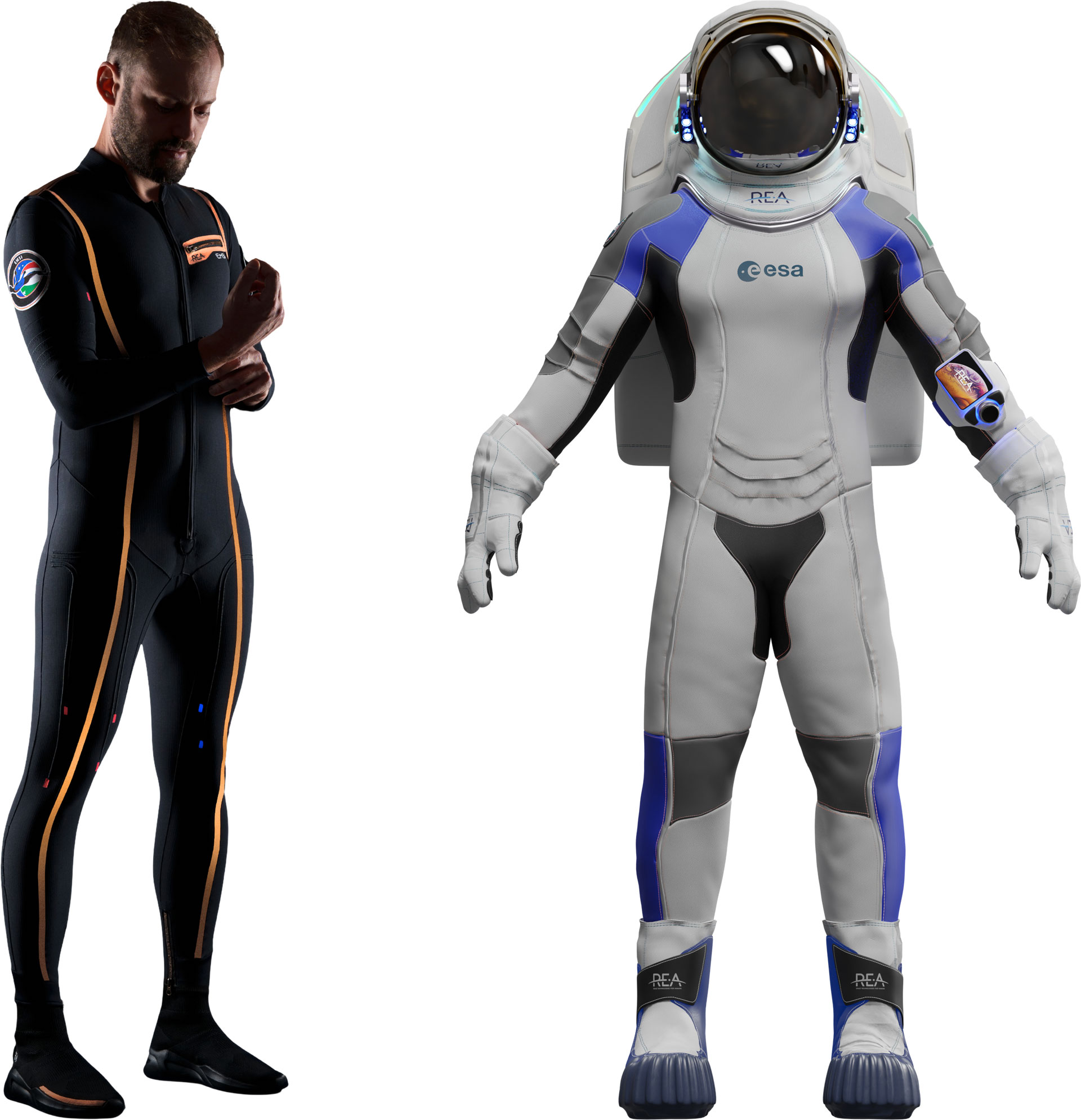
Source: REA Space
Spain should also be included on the list of leading European countries actively supporting aerospace startups. In 2023, Spain nurtured 11 new startups in its business incubators. Some of these will be launched in 2024, but the majority will complete their incubation period in 2025. Similar to Italy, Spanish ESA BICs are distributed between two main centers: in Madrid (ESA BIC Madrid Region) and Barcelona (ESA BIC Barcelona).
Among the most interesting Spanish solutions comes from the Barcelona startup Circe – Smart Navigation Solutions S.L, which will complete its incubation period in 2024. The company focuses on developing new methods and standards for safe satellite navigation, bypassing GPS/GNSS geospatial data protocols that cannot guarantee necessary levels of reliability and security. Currently, most secure satellite positioning and navigation systems are military in nature and are therefore not available to commercial markets. Circe is working to move in a new direction by developing software solutions based on machine learning algorithms capable of real-time tracking and classifying potential attacks on GPS/GNSS receivers.
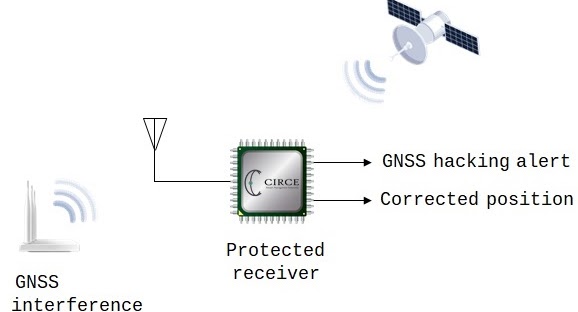
Source: circenav.com
Despite its small size, Switzerland also saw an impressive number of startups joining its regional business incubation centers in 2023, with a total of 11 by year’s end. Among these, BTRY stands out for its innovative solutions in the production of multilayer solid-state batteries capable of operating in the harshest space conditions. The batteries developed by the Swiss startup consist of densely packed, ultrathin layers of semiconductor materials, which externally resemble polyethylene film. Stacking such thin films on top of each other enables ultra-fast battery charging. Moreover, the process used by BTRY to assemble its batteries does not involve solvents, making this industry 100% environmentally friendly.
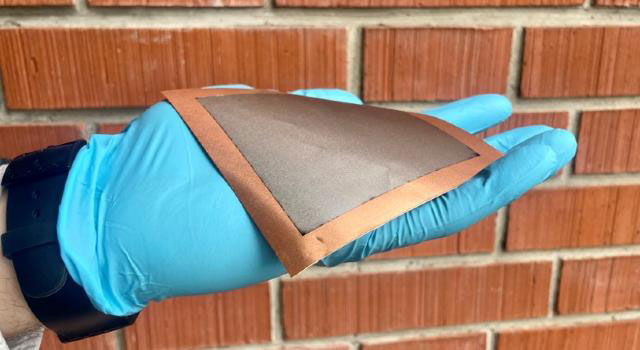
Source: startup.ch
Danish ESA BIC branches should also be included among the top five European business incubators. In 2023, they assisted 12 new startups in implementing a wide range of ideas: from a special device for monitoring lung conditions developed by Spiromagic to complex systems developed by Innopilot to monitor critical infrastructure using miniature high-altitude drones. In 2023, Danish startups also put forward the concept of sub-newton space propulsion systems powered by chemical fuel, which are currently being developed by North Propulsion.
Looking at the diversity of ideas and new technologies coming out of ESA’s incubation business centers, it is pleasantly surprising to see just how carefully the European space sector approaches the development and support of new solutions. Currently, the dozens of ESA BICs located across various parts of Europe are decisive for advancing European leadership in the commercial space sector. However, the high percentage of non-European capital investment also indicates a growing demand for new European technological solutions, suggesting that ESA may need to spend even more to support new startups to encourage them to continue their operations in the EU instead of relocating elsewhere.


